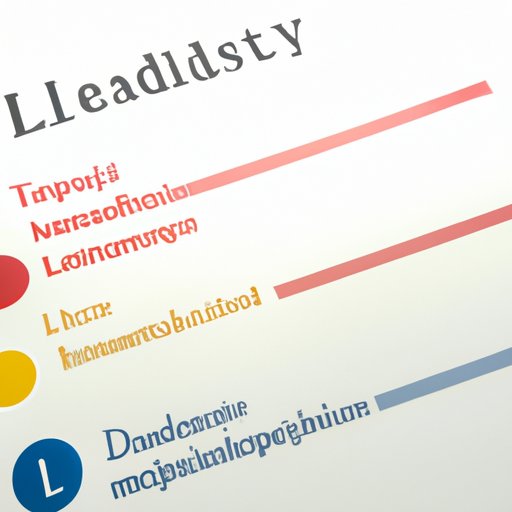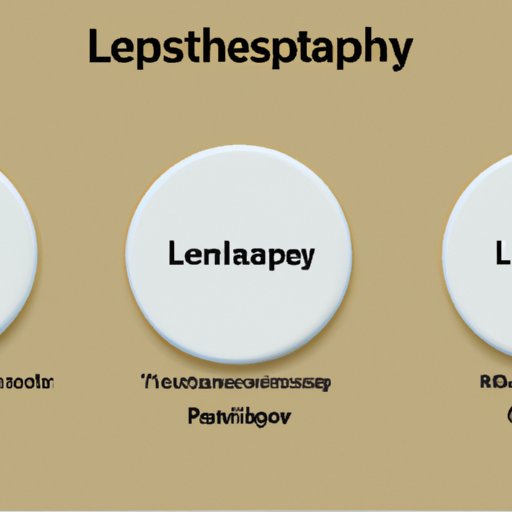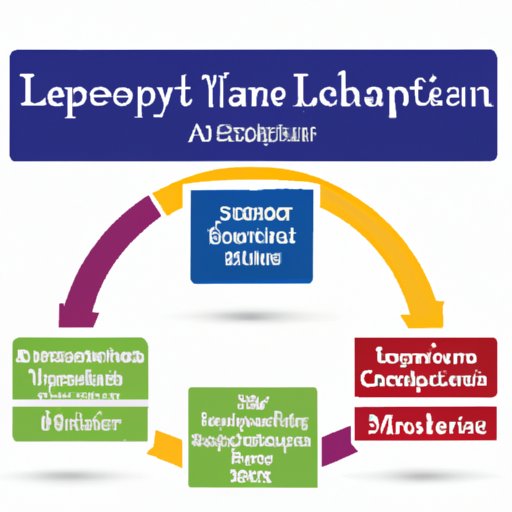Introduction
Leadership is a crucial part of any organization’s success. It is a process of influencing others to achieve a shared goal or vision. The effectiveness of a leader depends on their ability to motivate and inspire those around them. However, there are many different approaches to leadership, and it can be difficult to know which style will work best for your team.
In this article, we will explore the three main styles of leadership: autocratic, democratic, and laissez-faire. We will discuss the pros and cons of each style and provide a guide on how to choose the right one for your team. We will also examine the impact these styles have on employee engagement.

Comparative Analysis of the Three Leadership Styles
Let’s begin by taking a closer look at the three main styles of leadership: autocratic, democratic, and laissez-faire. Each style has its own unique strengths and weaknesses.
Autocratic Leadership
Autocratic leadership is a top-down approach in which the leader has complete control over decision-making and does not involve input from other team members. This style of leadership is often seen as authoritarian and can be off-putting for team members who may feel like their opinions are not valued.
Democratic Leadership
Democratic leadership is a more collaborative approach in which the leader encourages input from other team members and makes decisions based on consensus. This style of leadership can foster creativity and innovation, but it can also lead to long decision-making processes that can slow down progress.
Laissez-Faire Leadership
Laissez-faire leadership is a hands-off approach in which the leader delegates tasks and responsibilities to other team members. This style of leadership can be effective if the team is highly skilled and motivated, but it can also lead to confusion and disorganization if the team lacks direction.
Exploring the Pros and Cons of Each Leadership Style
Now let’s take a closer look at the advantages and disadvantages of each style of leadership.
Autocratic Leadership
The main advantage of autocratic leadership is that it can be a quick and efficient way to make decisions. It can also help to maintain order and structure within the team. However, this style of leadership can lead to low morale, as team members may feel like their opinions are not valued or respected.
Democratic Leadership
The main advantage of democratic leadership is that it can foster creativity and innovation, as team members are encouraged to share their ideas and opinions. This style of leadership can also help to build trust and respect among team members. However, it can also lead to lengthy decision-making processes that can slow down progress.
Laissez-Faire Leadership
The main advantage of laissez-faire leadership is that it can be effective in teams that are highly skilled and motivated, as it allows team members to take initiative and make decisions independently. However, this style of leadership can also create confusion and disorganization if team members lack direction and guidance.
Examining the Impact of Different Leadership Styles on Teams
It’s important to consider how different leadership styles can impact the overall performance of a team. Let’s take a closer look at the impact of each style.
Autocratic Leadership
Autocratic leadership can lead to low morale and resentment among team members, as they may feel like their opinions are not valued or respected. This can lead to decreased productivity and a lack of motivation.
Democratic Leadership
Democratic leadership can help to build trust and respect among team members, as everyone is encouraged to share their ideas and opinions. This can lead to increased creativity and innovation, as well as improved communication and collaboration.
Laissez-Faire Leadership
Laissez-faire leadership can be effective in teams that are highly skilled and motivated, as it allows team members to take initiative and make decisions independently. However, it can also lead to confusion and disorganization if team members lack direction and guidance.

An Overview of the Three Leadership Styles
To recap, the three main styles of leadership are autocratic, democratic, and laissez-faire. Autocratic leadership is a top-down approach in which the leader has complete control over decision-making. Democratic leadership is a more collaborative approach in which the leader encourages input from other team members. Laissez-faire leadership is a hands-off approach in which the leader delegates tasks and responsibilities to other team members.

A Guide to Choosing the Right Leadership Style for Your Team
Now that you have a better understanding of the three main styles of leadership, let’s look at how to choose the right one for your team.
Evaluating Your Team’s Needs
The first step is to evaluate your team’s needs. Think about what type of environment will best foster creativity and innovation, as well as encourage collaboration and communication. Consider the strengths and weaknesses of each leadership style and decide which one will be the most effective for your team.
Understanding the Strengths and Weaknesses of Each Leadership Style
It’s important to understand the strengths and weaknesses of each leadership style. Autocratic leadership can be a quick and efficient way to make decisions, but it can lead to low morale. Democratic leadership can foster creativity and innovation, but it can also lead to lengthy decision-making processes. Laissez-faire leadership can be effective in teams that are highly skilled and motivated, but it can also lead to confusion and disorganization.
Crafting an Appropriate Leadership Style for Your Team
Once you have evaluated your team’s needs and considered the strengths and weaknesses of each leadership style, you should be able to craft an appropriate leadership style for your team. Think about which style will best motivate and inspire your team, as well as foster creativity, collaboration, and communication.
Success Stories Demonstrating the Use of Different Leadership Styles
Now let’s look at some success stories demonstrating the use of different leadership styles.
Autocratic Leadership
One example of successful autocratic leadership is Apple co-founder Steve Jobs. During his time at Apple, Jobs had complete control over decision-making and was known for his “my way or the highway” mentality. His leadership style was extremely effective in driving innovation and helping Apple become the tech giant it is today.
Democratic Leadership
An example of successful democratic leadership is former U.S. President Barack Obama. During his term, Obama created a culture of collaboration and encouraged input from all team members. His leadership style was instrumental in passing key legislation and improving the economy.
Laissez-Faire Leadership
An example of successful laissez-faire leadership is Amazon CEO Jeff Bezos. Bezos has a hands-off approach to leadership and delegates tasks and responsibilities to other team members. His leadership style has been instrumental in helping Amazon become one of the largest companies in the world.

Analyzing the Impact of Leadership Styles on Employee Engagement
Finally, let’s examine the impact different leadership styles can have on employee engagement.
Autocratic Leadership
Autocratic leadership can lead to low morale and resentment among team members, which can decrease employee engagement. Employees may feel like their opinions are not valued or respected, which can lead to decreased motivation and productivity.
Democratic Leadership
Democratic leadership can help to build trust and respect among team members, which can increase employee engagement. Employees are encouraged to share their ideas and opinions, which can lead to increased creativity and innovation.
Laissez-Faire Leadership
Laissez-faire leadership can be effective in teams that are highly skilled and motivated, as it allows team members to take initiative and make decisions independently. This can lead to increased engagement and motivation, as employees are given the freedom to pursue their own goals.
Conclusion
In conclusion, there are three main styles of leadership: autocratic, democratic, and laissez-faire. Each style has its own unique strengths and weaknesses, and it is important to choose the right one for your team. It is also important to consider how different leadership styles can impact employee engagement. By evaluating your team’s needs and understanding the strengths and weaknesses of each style, you can craft an appropriate leadership style for your team.
(Note: Is this article not meeting your expectations? Do you have knowledge or insights to share? Unlock new opportunities and expand your reach by joining our authors team. Click Registration to join us and share your expertise with our readers.)
